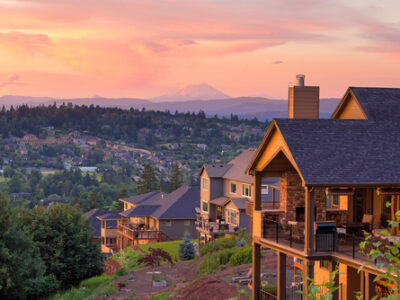 Living off the grid in a mountainous region like Montana can be an incredibly rewarding experience. With breathtaking landscapes and abundant natural resources, it’s no wonder many individuals in Montana are interested in sustainable and self-sufficient living. In this blog post, we will provide you with valuable tips for off-grid mountain homes, targeting readers in Montana who are looking to embrace a sustainable lifestyle while enjoying the beauty of their surroundings.
Living off the grid in a mountainous region like Montana can be an incredibly rewarding experience. With breathtaking landscapes and abundant natural resources, it’s no wonder many individuals in Montana are interested in sustainable and self-sufficient living. In this blog post, we will provide you with valuable tips for off-grid mountain homes, targeting readers in Montana who are looking to embrace a sustainable lifestyle while enjoying the beauty of their surroundings.
1. Choose the Right Location
When it comes to off-grid living in a mountainous region, choosing the right location is crucial. Look for areas that receive sufficient sunlight for solar energy systems and have access to water sources, either through natural streams or by drilling a well. Assess the topography of the land and consider factors such as potential hazards, soil quality for gardening, and the overall suitability for sustainable living. Connecting with local experts or off-grid communities in Montana can provide valuable insights regarding the best locations.
2. Install a Reliable Solar System
One of the key components of off-grid living is a reliable solar energy system. Montana receives abundant sunshine throughout the year, making it an ideal location for solar power. Install a solar panel system that can generate enough electricity to meet your energy needs. Consider factors such as the size of the system, battery storage capacity, and the number of panels required. Don’t forget to position the solar panels to optimize sunlight exposure and consult with professionals for the best installation practices.
3. Harness the Power of Wind
In addition to solar power, Montana’s mountainous regions often experience strong winds, making wind energy an excellent complement to your off-grid system. Consider installing a wind turbine to harness the power of wind and generate more sustainable energy. However, keep in mind that wind turbines require specific wind conditions and proper placement for optimal efficiency. Consult with local experts or off-grid communities to ensure the suitability of wind energy for your specific location.
4. Implement Water Harvesting and Treatment Systems
In off-grid mountain homes, having a reliable and sustainable water source is essential. Explore options for water harvesting, such as rainwater collection systems, to ensure a consistent supply. Install a storage tank or cistern to store collected water and implement a treatment system to make the water potable. Utilize filtration methods such as UV light or charcoal filters to remove impurities and ensure the safety of the water for drinking and everyday use.
5. Cultivate a Sustainable Garden
Living off the grid provides an opportunity to cultivate your food and become self-sufficient. Create a sustainable garden by choosing native and climate-appropriate plants that thrive in the mountainous region of Montana. Consider incorporating permaculture principles to maximize productivity and minimize maintenance. Use organic practices such as composting, mulching, and natural pest control to ensure the health of your plants and the sustainability of your garden.
6. Practice Efficient Waste Management
Sustainable living extends beyond energy and water systems; efficient waste management is equally important. Implement recycling programs to minimize the amount of waste that goes to landfills. Compost food scraps and yard waste to create nutrient-rich soil for your garden. Invest in low-flow fixtures and water-saving technologies to reduce water usage. Explore alternative waste treatment options, such as composting toilets or greywater recycling systems. By minimizing waste, you can reduce your environmental impact and contribute to a sustainable lifestyle.
7. Embrace Off-Grid Community Resources
Living off-grid doesn’t mean you have to do it alone. Embrace the resources and support available through off-grid communities in your area. Connect with like-minded individuals who share similar interests and challenges. Attend workshops, seminars, and local events focused on sustainable living to learn from experts and exchange knowledge with others. Engaging with the off-grid community can provide valuable insights, inspiration, and a support network as you navigate life in an off-grid mountain home.
Conclusion
Living off the grid in a mountainous region like Montana offers exciting opportunities for sustainable and self-sufficient living. By choosing the right location, installing reliable solar and wind energy systems, implementing water harvesting and treatment systems, cultivating a sustainable garden, practicing efficient waste management, and embracing off-grid community resources, you can create a thriving and sustainable off-grid home in the beautiful mountains of Montana. Embrace a lifestyle that respects and preserves the natural resources surrounding you while enjoying the freedom and independence that off-grid living offers.
Got Questions? Let Us Help!
Lyndon L. Steinmetz Design Studio, LLC is regionally known for helping people turn their residential design visions into reality. Our work has been featured in regional and national publications and ranges from conceptual design to consulting services. See how our three decades of experience can help you find elegance and luxury in some of nature’s most rustic locations. Call us today for a consultation.
